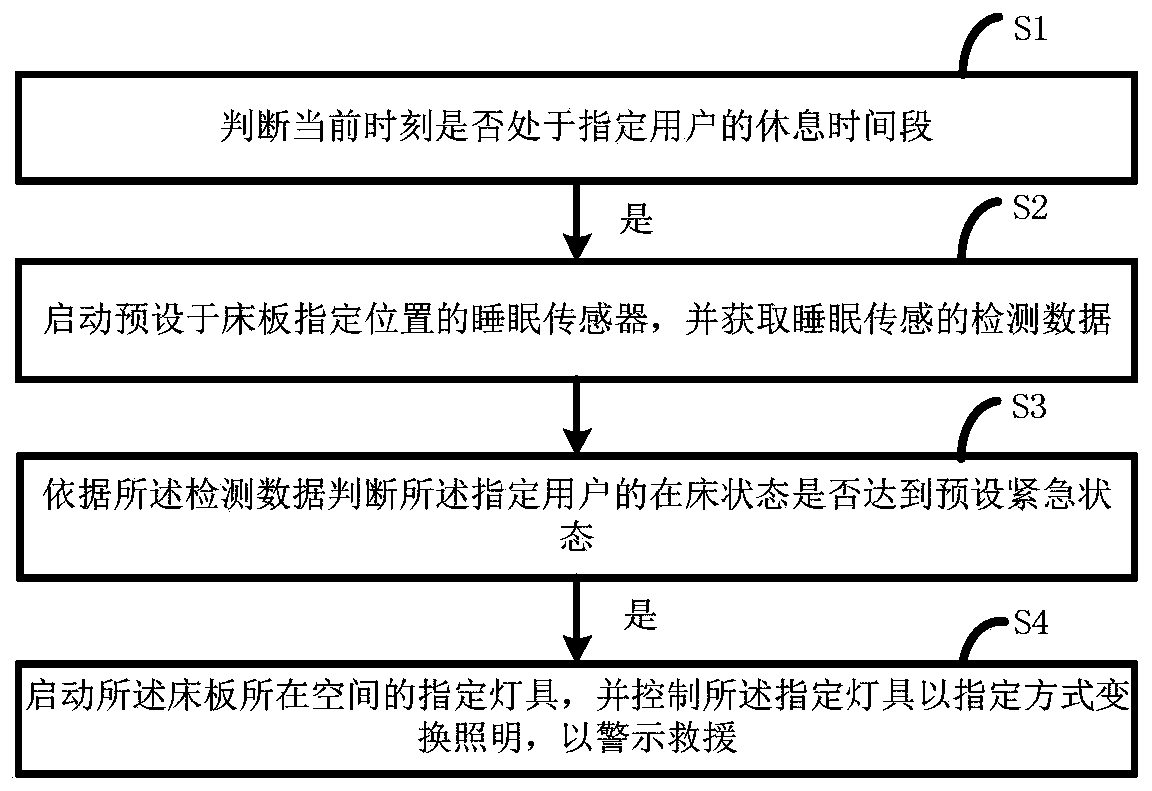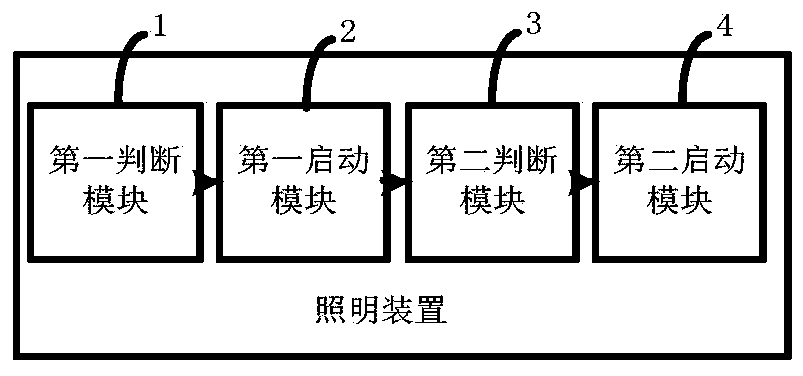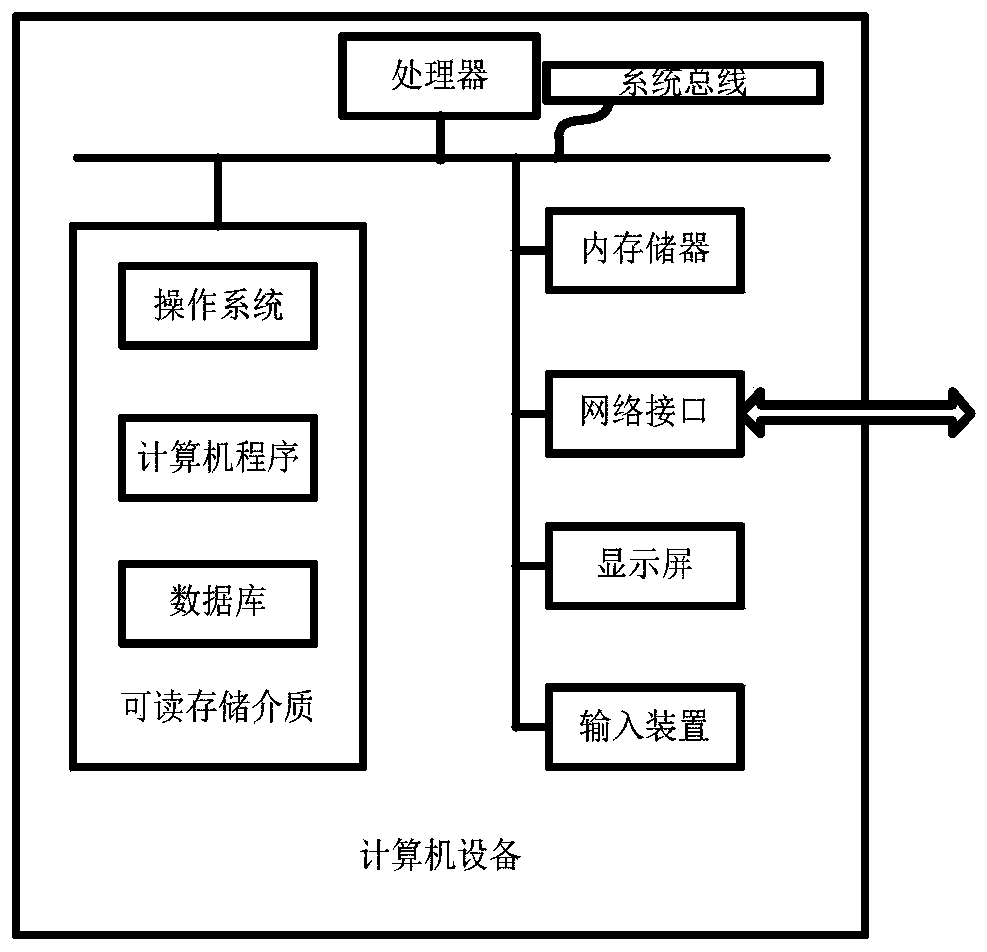Lighting method and lighting device
A lighting method and a technology for specifying users, applied in the direction of electrical components, etc., can solve the problems of a system that is not used to monitor the status of the elderly in bed, and achieve a good alarm effect.
- Summary
- Abstract
- Description
- Claims
- Application Information
AI Technical Summary
Problems solved by technology
Method used
Image
Examples
Embodiment Construction
[0052] It should be understood that the specific embodiments described here are only used to explain the present application, and are not intended to limit the present application.
[0053] refer to figure 1 , the lighting method of an embodiment of the present application, comprising:
[0054] S1: Determine whether the current moment is in the rest period of the designated user;
[0055] S2: If yes, activate the sleep sensor preset at the designated position of the bed board, and obtain the detection data of the sleep sensor;
[0056] S3: judging whether the specified user's bed-in-bed state reaches a preset emergency state according to the detection data;
[0057] S4: If yes, activate the designated lamps in the space where the bed board is located, and control the designated lamps to change the lighting in a designated manner, so as to warn rescuers.
[0058]The above-mentioned rest time period can be customized by the user, preferably the night sleep time period, for ex...
PUM
 Login to View More
Login to View More Abstract
Description
Claims
Application Information
 Login to View More
Login to View More - R&D
- Intellectual Property
- Life Sciences
- Materials
- Tech Scout
- Unparalleled Data Quality
- Higher Quality Content
- 60% Fewer Hallucinations
Browse by: Latest US Patents, China's latest patents, Technical Efficacy Thesaurus, Application Domain, Technology Topic, Popular Technical Reports.
© 2025 PatSnap. All rights reserved.Legal|Privacy policy|Modern Slavery Act Transparency Statement|Sitemap|About US| Contact US: help@patsnap.com



